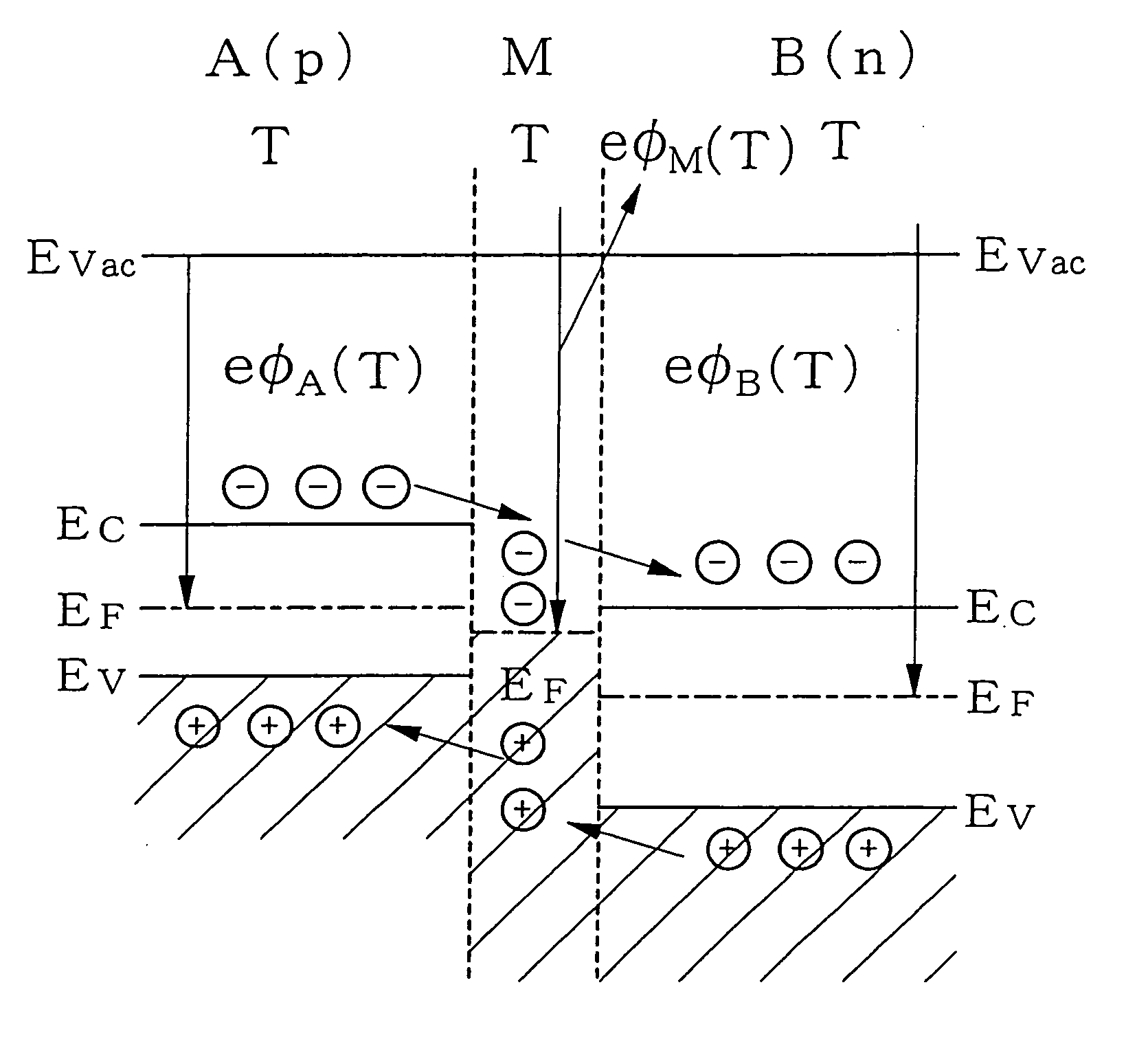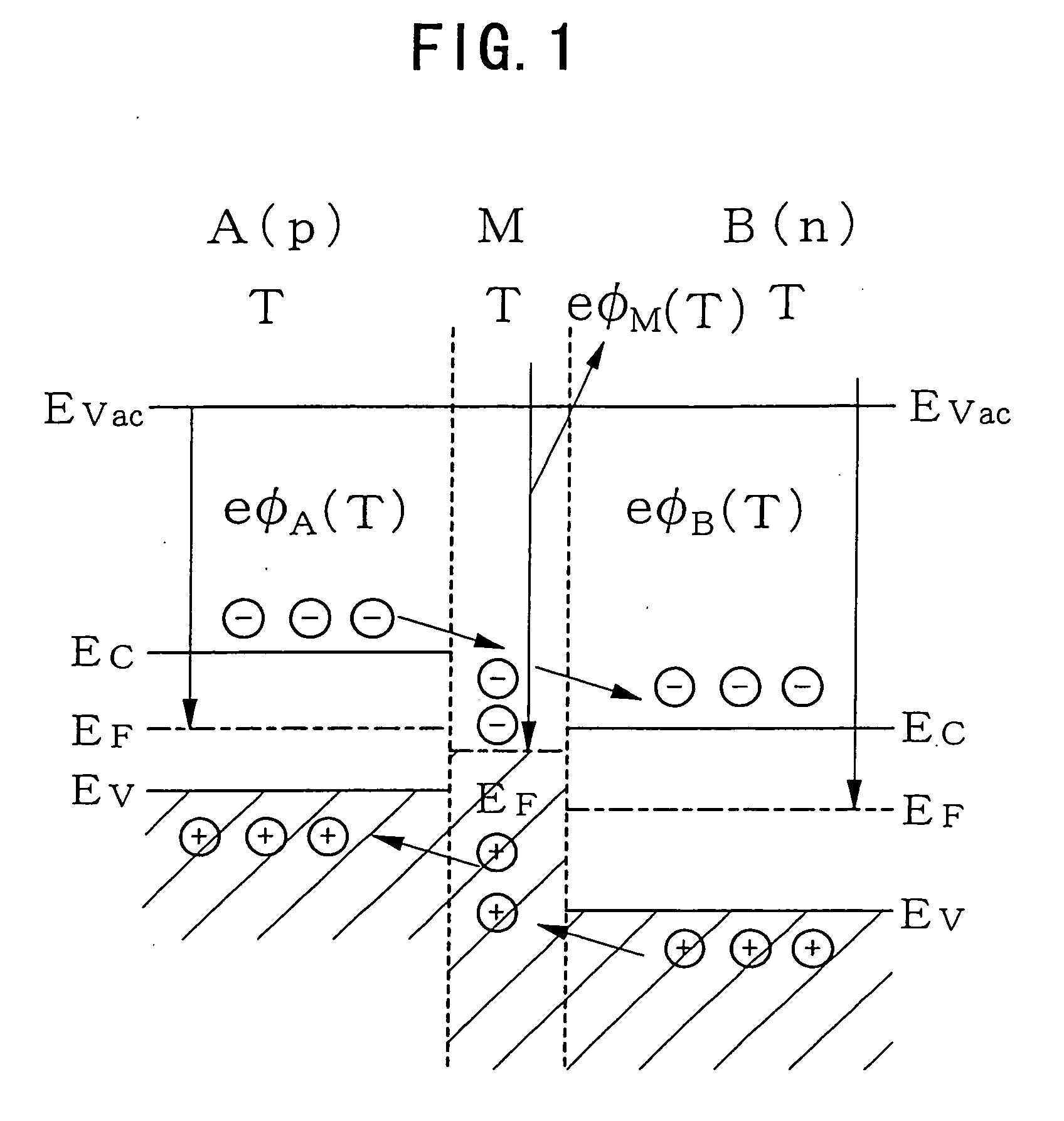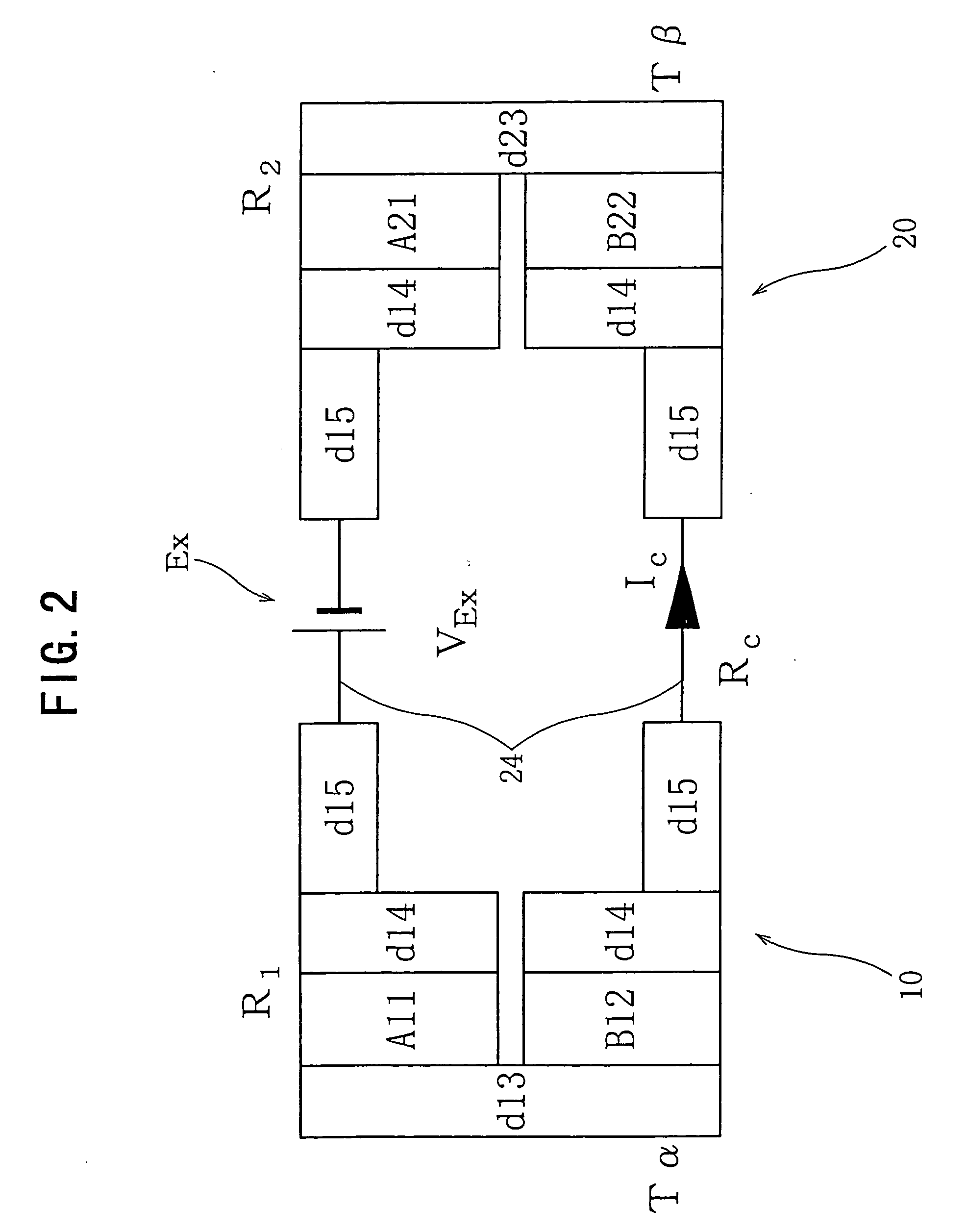Thermoelectric effect apparatus, energy direct conversion system , and energy conversion system
- Summary
- Abstract
- Description
- Claims
- Application Information
AI Technical Summary
Benefits of technology
Problems solved by technology
Method used
Image
Examples
first embodiment
[0053]FIG. 2 relates to a thermoelectric apparatus of a first embodiment, and is a schematic circuit diagram for describing a pair of Peltier effect heat transfer circuit systems that can freely set a space between two thermoelectric transducers. In addition, in each of symbols shown in FIG. 2, R1 and R2 denote resistance of conductive members on the heat absorption side and the heat generation side (or on the high temperature side and the low temperature side), IC denotes circuit current, RC denotes circuit resistance at a connecting conductive member, and VEX denotes external power source voltage. Each of the symbols is the same in embodiments and examples below.
[0054] As shown in FIG. 2, a first conductive member A11 and a second conductive member B12 having different Seebeck coefficients are joined to each other through a joining member d13 formed of a material of excellent thermal conductivity and electrical conductivity (such as copper, gold, platinum, and aluminum) to form a...
second embodiment
[0068] The external direct-current power supply EX was removed from the Peltier effect circuit shown in FIG. 2 of the first embodiment, and the both ends of the circuit, that is, the joining member d13 of the first thermoelectric transducer 10 and the joining member d23 of the second thermoelectric transducer 20 were heated and cooled to provide a temperature difference about a temperature of 80° C. It could be confirmed that an electromotive force of 0.2 mv was generated at the terminal where the power source EX had been removed. Furthermore, it could also be confirmed that the Seebeck effect was not dissipated and was kept in the configuration in which the first thermoelectric transducer 10 of the heating side was separated from the second thermoelectric transducer 20 of the cooling side.
[0069]FIG. 7 relates to a second embodiment, and is a schematic circuit diagram for describing a pair of direct conversion circuit systems from thermal energy to electric energy by the Seebeck ef...
third embodiment
[0076] In a third embodiment, based on the basic technical concept of the invention, specific configurations for achieving an object of the invention (for example, specific examples of the configurations shown in the first and second embodiments) will be described.
[0077]FIG. 8 is a schematic circuit diagram illustrating a self-driven heat transfer system for describing a direct energy conversion system using a thermoelectric apparatus (for example, the thermoelectric apparatus of the first embodiment) in the third embodiment. In addition, in FIG. 8 (and FIGS. 10 to 16 described later), Vs denotes voltage output, RC1 and RC2 denote circuit resistance, and IC denotes circuit current. Furthermore, a symbol 30 denotes a thermoelectric transducer as similar to the first thermoelectric transducer 10 and the second thermoelectric transducer 20 shown in FIG. 7. Moreover, Is denotes an insulating material having excellent thermal conductivity and insulation properties (for example, silicone...
PUM
 Login to View More
Login to View More Abstract
Description
Claims
Application Information
 Login to View More
Login to View More - R&D
- Intellectual Property
- Life Sciences
- Materials
- Tech Scout
- Unparalleled Data Quality
- Higher Quality Content
- 60% Fewer Hallucinations
Browse by: Latest US Patents, China's latest patents, Technical Efficacy Thesaurus, Application Domain, Technology Topic, Popular Technical Reports.
© 2025 PatSnap. All rights reserved.Legal|Privacy policy|Modern Slavery Act Transparency Statement|Sitemap|About US| Contact US: help@patsnap.com



